Lol Tolhurst x Budgie x Jacknife Lee On Bringing Goth & Electronica 'Full Circle'
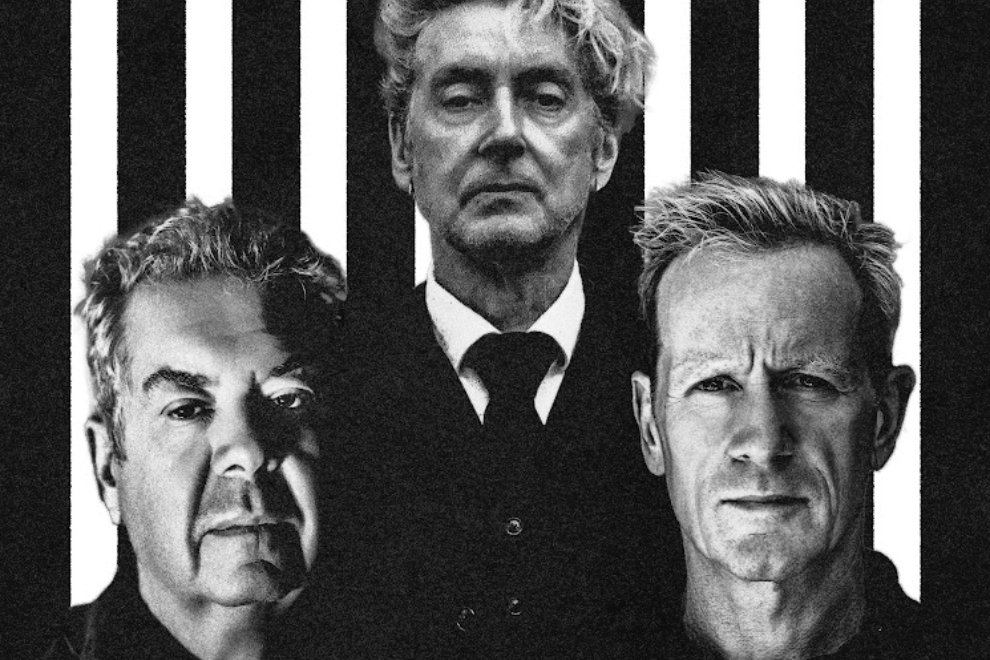
The most cutting-edge dance music album of 2023 couldn’t have come from a more outlandish trio – iconic post-punk drummers Peter “Budgie” Clarke (of Siouxsie And The Banshees and The Creatures fame) and Laurence “Lol” Tolhurst (The Cure) plus super-producer Garret “Jacknife” Lee. But, no mere supergroup venture, Los Angeles is the story of rejuvenation through curiosity.
The ambitious project – with guest stars like Primal Scream‘s Bobby Gillespie, LCD Soundsystem‘s James Murphy, Modest Mouse‘s Isaac Brock, U2‘s lead guitarist The Edge and visual artist-cum-musician Lonnie Holley – was inspired by Lol’s adopted Californian hometown. Yet Los Angeles is a tenebrous – nay, goth – take on punk-funk. Archetypal Cali surf-pop, it isn’t.
Historically associated with recession, goth has latterly experienced a revival. In 2021, Budgie and Lol launched a buzz podcast, Curious Creatures, their mission “to explore post-punk’s enduring legacy and contemporary relevance.” And, in September, Lol published Goth: A History. At any rate, the duo aren’t trading on nostalgia so much as repositioning themselves, Los Angeles a soft reinvention.
In person, Budgie and Lol are far from gloomy as they conduct separate and staggered post-release interviews over Zoom – each in disparate timezones, Berlin and Los Angeles, respectively.
THE PAST (BEING EATEN)
The youthful Budgie is animated, genial and digressive. These days, he’s a family man – and casually mentions chaperoning his daughter to a ballet class. When not gigging as a prestige session and tour drummer, Budgie teaches at BIMM Institute Berlin. “I’ve enjoyed the challenges that Berlin has given me, and the challenges that two small children are giving me, and trying to fit into now what seems like the busiest schedule because of everything else,” he says with a Northern lilt from his Merseyside upbringing.
Renowned as an innovative drummer (and percussionist), Budgie was playing in mythic bands even before joining The Banshees in 1979 – notably being credited on The Slits’ seminal Cut. Conceived in London by mercurial singer/songwriter Siouxsie Sioux and bassist Steven Severin in 1976, The Banshees bloomed with their third outing, 1980’s Kaleidoscope. Budgie also formed The Creatures as a cult side-project with Siouxsie – the pair becoming an item, marrying in 1991. The Creatures resumed after The Banshees’ mid-’90s split.
Duran Duran boldly reinterpreted The Banshees’ enduring Spellbound for a Halloween album, DANSE MACABRE – and Budgie fondly refers to their stickman Roger Taylor as his “old friend,” the two once sharing the cover of Rhythm magazine. (He donned “fake” black leather gloves.)
“I like it,” Budgie declares of Duran Duran’s homage. “I like hearing Simon [Le Bon] tackle anything. He’s just so down-to-earth about everything. He doesn’t get sort of swayed by what you should and shouldn’t do. So I s’pose that’s testament to their longevity.”
His commendation is a surprise since, back in the ’80s, punk rockers (and media) regarded New Romantics with disdain, especially as they crossed into the mainstream.
Budgie remembers waiting to enter Abbey Road Studios when The Banshees (possibly) recorded their classic covers collection Through The Looking Glass – Le Bon “skirted past” as he yelled, “‘Morning, Simon!'” Budgie chuckles, “I knew he didn’t hear me because he was surrounded by screaming girls. I just thought, ‘Rather you than me,’ even though I was insanely jealous.” The rivalry with Duran Duran was largely about major label budgets. “They kind of came in through the side door and quickly usurped everybody, and, of course, you’re gonna go there, ‘Meh – hey!'”
In 2023, Budgie feels an affinity with anyone who’s survived rock & roll (The Banshees’ feted guitarist on Spellbound, John McGeoch, passed in 2004). “There’s so many people not around – and that’s sad,” he laments. “You do think, ‘Well, we must be here for a reason.'”
THIS IS WHAT IT IS (TO BE FREE)
Budgie has known Lol since 1979, when The Cure supported The Banshees on tour – a then louche Robert Smith moonlighting as their guitarist. Clearly, they have inside jokes – Budgie suggesting that this writer probe Lol about “The Integratron”. “He’ll wax lyrical about it,” he teases. “I won’t tell you what it is.” In fact, The Integratron is a dome built in the Californian desert in the ’50s by the ufologist George van Tassel as a corporeal time machine, but now used for sound bath therapies.
Two days later, in humid LA, Lol dryly confirms that he has successively visited the Landers’ landmark, soon rhapsodising about it being “cyclically in a completely different space” and “very loud and pretty wonderful.”
The West Sussex native befriended Smith in primary school – and they’d co-found The Cure circa 1978. The band debuted with 1979’s punk Three Imaginary Boys, only to usher in a romantically melancholy goth aesthetic on their breakthrough Seventeen Seconds, encompassing the timeless single A Forest. A subculture was born.
Initially, Lol played drums, but he switched to keys following 1982’s massive Pornography – occasionally penning lyrics. Alas, he was compelled to leave The Cure in 1989, prior to the release of Disintegration, due to his chronic alcoholism – culminating in a bitter lawsuit.
Lol would seek solace and redemption in The City Of Angels. In the 2000s, he and his wife, Cindy Levinson, devised the electro-pop vehicle Levinhurst. “I’ve lived here 30 years and my life changed completely living here. It’s almost miraculous how different my life is now than it was. So I feel very happy here.”
Reserved and pensive, Lol appreciates Budgie’s fervour for life – and Los Angeles. “I’m enthusiastic about it, too,” he stresses. “But Budgie’s always youthful – he’s a youthful kind of person, which is why he’s great to be around.” Lol considers the album a sleeper. “I know how different I feel it was for us – and so I think it’s gonna be the same for other people because it’s not what people expect straightaway, you know?”
LOS ANGELES
Lol and Budgie first discussed a collaborative project in late 2018 – with Bauhaus‘ Kevin Haskins as the third player. “We were all having lunch one day, as you do,” Lol says archly. “I said, ‘We should try something like, instead of The Three Tenors, the three drummers.'”
Drummers have a special fellowship. “We’re very good at bonding, drummers in general,” Budgie maintains. “You are often the joker in the band. You’re often the kind of soothsayer, the spreading oil on troubled waters, the glue that might bond… You have to listen to everybody very carefully and watch what’s going on from back there – and then you get to make the most noise.”
The three commenced work the next year with Nine Inch Nails alumni Danny Lohner as producer. But, Lol explains, their output didn’t have that magic. “At the end of it, we had something that sounded very much like what you would imagine a record by a guy from The Cure, a guy from The Banshees [and] a guy from Bauhaus, produced by a guy from NIN, would sound like. I don’t think that was fulfilling for any of us ’cause it was like excavating, not creating – it’s like re-polishing up the past for something.”
Then “fate intervened” – Haskins reconvening with Bauhaus on tour. Despondent, Lol had a chat about the shelved project with a mate, Jacknife, while hanging out at the Topanga Days Festival. “I’m gonna talk about hippies again,” he deadpans. Lol relates how they caught The Doors‘ drummer John Densmore randomly introducing Willie Nelson‘s son Lukas and his outfit Promise Of The Real. “I’m not really a country guy, but they were really good – ’cause they were like a sort of punk country band.”
Hailing from Dublin, Jacknife has had a serpentine career. He started as a guitarist in the garage band Compulsion but rebranded himself as a DJ/producer (signed to Howie B‘s Pussyfoot Records). Nowadays, he’s a super-producer in the US, contributing to albums by REM, U2 and Taylor Swift.
The Irishman reviewed Lol’s demos at his nearby studio – and dispensed invaluable advice. “He said, ‘Why don’t we do something different?'” Lol narrates. It was a turning point. “I got out, and I called Budgie, and I was probably crying ’cause it was very emotional. I was like, ‘Hey, I found our guy – I found the person we need to make this work for us.'”
TRAIN WITH NO STATION
Before they began, Lol, Budgie and Jacknife embarked on a weekend retreat to Yosemite – an acquaintance of Lol’s inviting them to stay “because it’s one thing being friends, but it’s another thing thinking that we’re gonna work together on music,” he rationalises. Here, they recorded their First Nations patron’s traditional drum at a sacred spring – its reverberations heard on Ghosted At Home with Bobby Gillespie. “I realise I sound very much like a New Age person,” Lol reiterates.
Back in his Topanga studio, Jacknife “dipped into” the group members’ “collective pasts and found out where we really were shining,” Budgie says. Nevertheless, the producer urged the rockers to think outside the box – their motto, “Nothing needs to be done, and everything will be done,” the Scouser continues. “We’ve really tried to keep out of the way and almost be curating this album, as much as anything else – without actually being hands-on curators, either – and seeing where it can take us.”
Jacknife stimulated them by spinning records. “We didn’t sit down and listen to music, but it was there in the background,” Budgie recounts. “It’s like going into the best coffee bar, going to Jacknife’s studio… Jacknife’s a great host – and an amazing musical mind with an eclectic collection of vinyl that looks like a Mexican Day Of The Dead party’s just happened.” Lol jokes that the “avid collector” had vinyl arriving daily.
The atmosphere was redolent of The Cure’s nascent days. “We would all get together at Robert’s house, and we’d have musical instruments around, but it was like a social thing,” Lol reminisces. “We’d get together, and maybe one of us would play something, and the other one would go, ‘Oh, okay, I know what could go with that’ and we’d do that.”
The Cure personnel were progressively cast in fixed roles, fostering resentment – and stasis. “If you’ve had a successful record, there’s this great pressure to go, ‘Well, we better do something that’s different but the same’ – which is kind of absurd,” Lol rues. But Jacknife ensured that he and Budgie didn’t slip into the same pattern. “Jacknife always said to us, like, ‘What’s the job of the musician? The job of the musician is discovery.'”
EVERYTHING AND NOTHING
Though maximalist, Los Angeles doesn’t feel chaotic. “I think the long evolution is the key,” says Budgie.
The album had many phases – previously being instrumental. The musicians had finished laying down the drum tracks as the COVID-19 pandemic surged, Budgie farewelling Lol at “a very empty LAX” en route to Europe. “We had some really exciting mixes of very long passages of music – some with drums and beats, and others just ambient,” he recalls. At that stage, their sonic references were minimalist ’70s LPs like Fripp & Eno’s Evening Star and Eno’s Another Green World.
Amid lockdown eternity, the trio contemplated adding vocalists – Lol canvassing another friend, James Murphy. Not coincidentally, LCD Soundsystem had covered The Banshees’ Slowdive as a B-side to 2005’s Disco Infiltrator, and Murphy was the first guest on Curious Creatures. Either way, Murphy was amenable but idled – eventually returning two songs, including the gritty title track (and lead single).
“We had no immediate rush,” Budgie says. “In fact, our whole thing was, ‘Allow what needs to happen the time to happen.’ We were not pushing this thing out the door – [though] Jacknife was, ’cause he wants to move on, always: ‘This thing’s been here ages, what you doin’?’ I’m going, ‘Well, we wanna give it a proper launch – this is huge for us!'”
Jacknife guided Lonnie Holley’s latest album, Oh Me Oh My – and persuaded the avant-garde vocalist to deliver his socially-conscious messaging on Bodies (alongside harpist Mary Lattimore).
For Budgie, Gillespie – enamoured of deep Americana – proved “the biggest surprise” with multiple contributions, among them the psychedelic opener This Is What It Is (To Be Free), speculating that it was “as if he’d just been waiting for us to knock on the door.”
The fold even fortuitously secured The Edge, who, Budgie notes, resides “on the next canyon top.” The U2 guitarist elevates Train With No Station – which ironically traverses Teutonic kosmische. “He just got wind of what we were doing and asked for some music. So we sent him stuff over, not knowing what to expect back. But Lol had just put down his favourite beat. We sent him that – and he shone to it.”
Liaising with other songwriters, Lol and Budgie intuited Los Angeles’ existentialist theme. “It’s really about the place where we made it,” Lol ponders.
The contradictions of LA pervade Los Angeles, the destination city variously equated with glamour, decadence, corruption, counterculture, possibility and liberty. “Maybe you get discovered, or maybe you get destroyed, or maybe both those things happen – and that’s part of the myth that is true.”
However, Lol is similarly fascinated by LA’s contentious history as “an oil town” – pumpjacks scattered across the urban landscape, as mirrored in the topical artwork.
But the album’s very spirit is inherently Californian. “It’s funny – out of something that came from a notion that we should just do something came a whole beautiful idea,” Lol reflects. “And that, to me, is the way that it should be. It’s not manufactured. It came out of ‘doing’; it came out of action.”
WE GOT TO MOVE
The Banshees and The Cure alike have influenced electronica – from synth-pop (Smith collaborated with Chvrches) to trip-hop (Tricky is a Banshees fan). Budgie, Lol and Jacknife are now bringing pop culture full circle.
As a kid, Budgie was “excited” by modular synthesisers. “If I heard a synth, I was going, ‘What is that, who is that?'” He listened to “some very odd formations of musicians.” Budgie laughingly cites the kitsch Son Of My Father, a Giorgio Moroder composition recorded by ephemeral glam rockers Chicory Tip and the earliest UK #1 to feature a synth in 1972.
But drums came first. “I had a drumkit bias just because I liked setting the music stands up at school,” he says. “It was more to do with the nuts and bolts of it, literally. [So] I wasn’t a synth geek, but I loved the sound of them. I would emulate them until we got an emulator in the studio.
“Synthetic drums didn’t interest me much – these synths that were trying to emulate instruments. But I loved finding sounds that were then synthesised to make music –because it was the way I heard my own part in music, really. I never heard drums as just the beat; it was more of a thud with a note.”
The Banshees experimented with hip-hop and dance music on 1988’s hit Peek-a-Boo – and their penultimate album, 1991’s Superstition, had hallmarks of the acid house era, Talvin Singh performing tabla on Kiss Them For Me. The group hired New Order producer Steven Hague and utilised computer programming. But Budgie speaks ambivalently of Superstition. “It almost felt like a swan song of sorts. The Banshees kept seeming to arrive at a point of nowhere else to go.”
That year, The Banshees were welcomed into the formative US alternative rock scene, playing the inaugural Lollapalooza. Tim Burton commissioned them to record a pivotal number for 1992’s movie blockbuster Batman Returns – resulting in Face To Face, which might be a lost Dr Dre banger.
The Banshees were thrilled to be courted by Hollywood, viewing rushes of Batman Returns in Warner Bros’ backlot – but, again, Budgie downplays the band’s impact. “That was a year out of our lives,” he divulges. “We dropped a lot of stuff that year to get on with what we thought could be career-changing – it certainly could have been, but it didn’t kind of do the same thing as we thought it would.”
Budgie harnessed new technology in The Creatures. The combo was originally “purist” with their focus on tribal drums and vocals, but the instrumentalist introduced textural elements like ambient drones – presaging Los Angeles. Crucially, the sequencer made touring viable for a two-piece on “a tight budget,” although Budgie remembers it as “very clumsy and clunky and heavy.”
In the late 2000s, Budgie accompanied the UK psytrance faves Juno Reactor on the road – and raves about vibing with the ensemble’s South African percussionists. Indeed, his outlook was always global. He was exposed to reggae early, learning directly from dub pioneer Dennis Bovell during his stint with The Slits. “It was an education, and it gave me a lot of freedom to express [myself] through drums, rather than just being the timekeeper – which I also love to be.”
Today, Budgie calls Lol “Mr Synth”. “He probably took over my obsession when he put the drumsticks down in The Cure and started investigating all those wonderful new machines.”
GHOSTED AT HOME
Lol and Budgie have not only retained a boyish curiosity about music but are also proactively searching for fresh challenges. Still, both are inevitably aware that their old bands are reaching a cross-generational audience – high-profile syncs for soundtracks a factor (perversely, The Banshees’ version of Iggy Pop’s The Passenger was used in I, Tonya). The Weeknd sampled Kaleidoscope’s Happy House for 2011’s House Of Balloons/Glass Table Girls – and goth sensibilities are permeating pop, R&B and hip-hop.
In 2016, Lol became an author, publishing his memoir, Cured: The Tale Of Two Imaginary Boys. “I’d always been a writer,” he says. “I wrote lyrics in The Cure. I wrote all my life.” Goth: A History was trickier, Lol unsure how to approach it until he discovered Joan Didion‘s essays about Californian counterculture in the ’60s and ’70s. And Budgie, too, is writing. “I’m working on a memoir – ’cause Lol’s already written his memoir, and he said, ‘You need to do your memoir!'” (He himself is currently enraptured by the Norwegian Karl Ove Knausgård.) The pals then present Curious Creatures, which Lol admits has provided canny promotion for Los Angeles.
Budgie is reluctant to pursue “the legacy thing” – he’s “very much looking forward to not going backwards.” But he and Lol acknowledge that their heritage is a platform in itself. “We’re unencumbered from the past, as much as we embrace it,” Budgie posits. “As Jacknife said, ‘You guys have done so much, and you really need to take credit for that – and, really, that’s just being who you are without the extra weight.'”
Lol is creatively restless. “I’m challenging myself because, look, I’m in the third act of whatever this is, right? Life. I feel that I don’t wanna go quietly into that good night. I want to be as active in the things that I love as possible… Also, you get to a point in your life where it is time to do something new, and if not now, when am I gonna do it? You’ve gotta do it while you’ve still got some marbles left.”
After two decades, Lol provisionally rejoined The Cure in 2011 to perform at the Sydney Opera House for Vivid – which he deems “one of my favourite memories,” chronicled in Cured. “I’d almost forgotten what the feeling was like stepping on stage with a lot of people – and it was like a big feedback loop. Once you feel that, it’s addicting, really. But it’s also very rejuvenating.”
He’s reminded of an observation made by The Cure’s bassist, Simon Gallup, about their growing older. “He said, ‘It doesn’t matter when you’re on stage, you have no age’ – and he’s kind of right. You can imagine that you’re 20 still again… There’s no age because, as long as your body doesn’t give out at a particular point, you’re fine.”
In 2019, The Cure were inducted into the US Rock & Roll Hall Of Fame – ironic for a band who perceived themselves as outsiders.
The Creatures last toured Australia in 2000, bizarrely heading a sparsely-attended Olympic Arts Festival in central Sydney – locals having exited town en masse, Budgie laughs. He returned as drummer with Danish indie-types Efterklang in 2012 and John Grant in 2016, punters astonished to spot him.
Meanwhile, The Banshees fleetingly regrouped in 2002 for international dates – and, two years on, Budgie served as Siouxsie’s music director when she performed with an orchestra at London’s Royal Festival Hall. In 2007, the elusive star re-emerged from her sanctum in the South Of France with an acclaimed solo debut, Mantaray and revealed to The Sunday Times that she and Budgie had divorced – “a big upheaval“. In later years, Steven Severin has alluded to feuds, but he reconciled with Siouxsie in 2015.
Budgie praises Siouxsie’s recent live comeback. “I think Siouxsie looked like she’s having a lot of fun out there.”
But he doubts the prospect of a Banshees reunion. “There’s no animosity – certainly not on my part,” Budgie states. “I’ve done my best over the last [few years] – and it’s been a while now; it’s like 18 years since Siouxsie and I played the last show together.
“We were coming off the rails at that point, anyway, so God knows how we got through the Royal Festival Hall shows. We’d hit the all-time low in a relationship. I had to really dig down and find out what was going on with me… We were still kind of in touch, and then it kind of went just quiet – and with Steve as well, Mr Severin.
“I was out on the road then, after I joined up with Juno [Reactor] and then with Efterklang. So those tours put me back in potential touch physically with my ex-colleagues. But there was no door opening. And so I don’t really hold out much [hope]. I think Steven had already decided that he’d hit the bench, as I’m sure he’s said in the press, that that’s it – he’s not gonna be picking a bass guitar up anytime soon.
“I think – well, what I think I’ll keep to myself… I know what I would be thinking of if that [reunion] was on. But I’ll have to wait until that conversation comes up; that ‘What we could do is this…'”
Budgie hints at something as wild: “There’s probably more chance of me joining [Nick Cave and]..










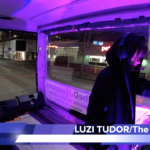
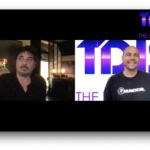
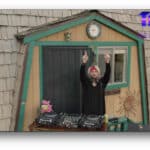
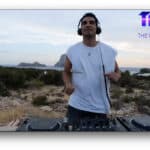
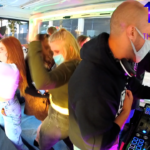

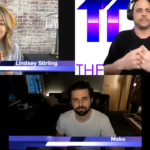
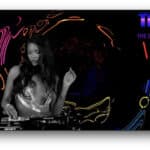

Comments
This post currently has no comments.